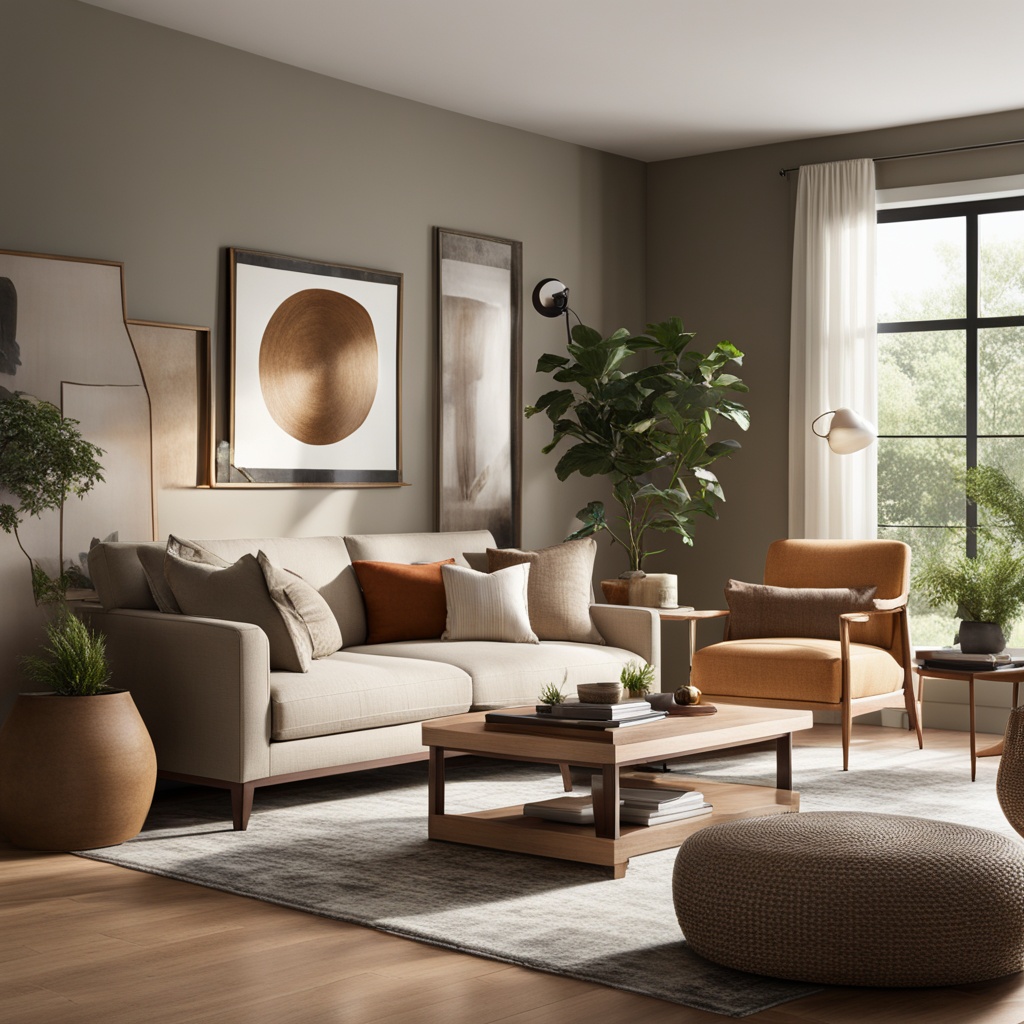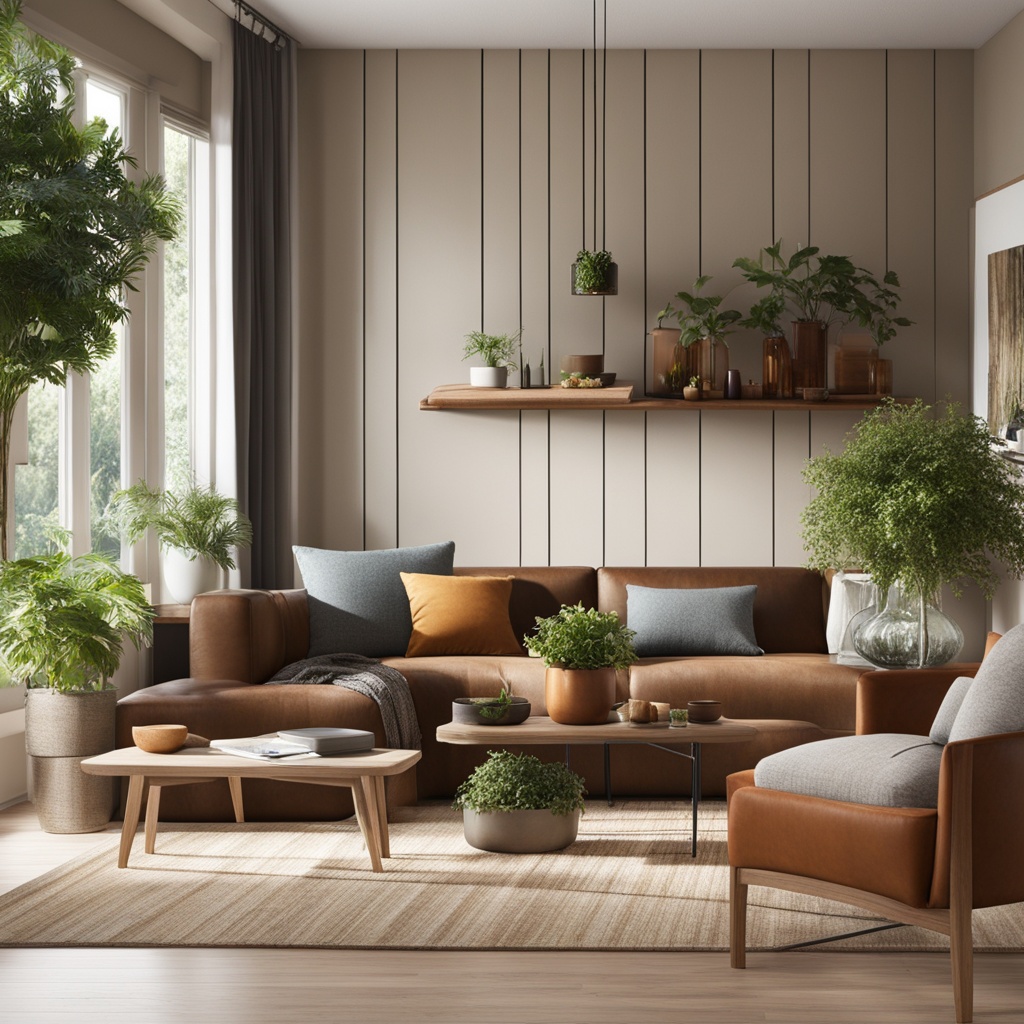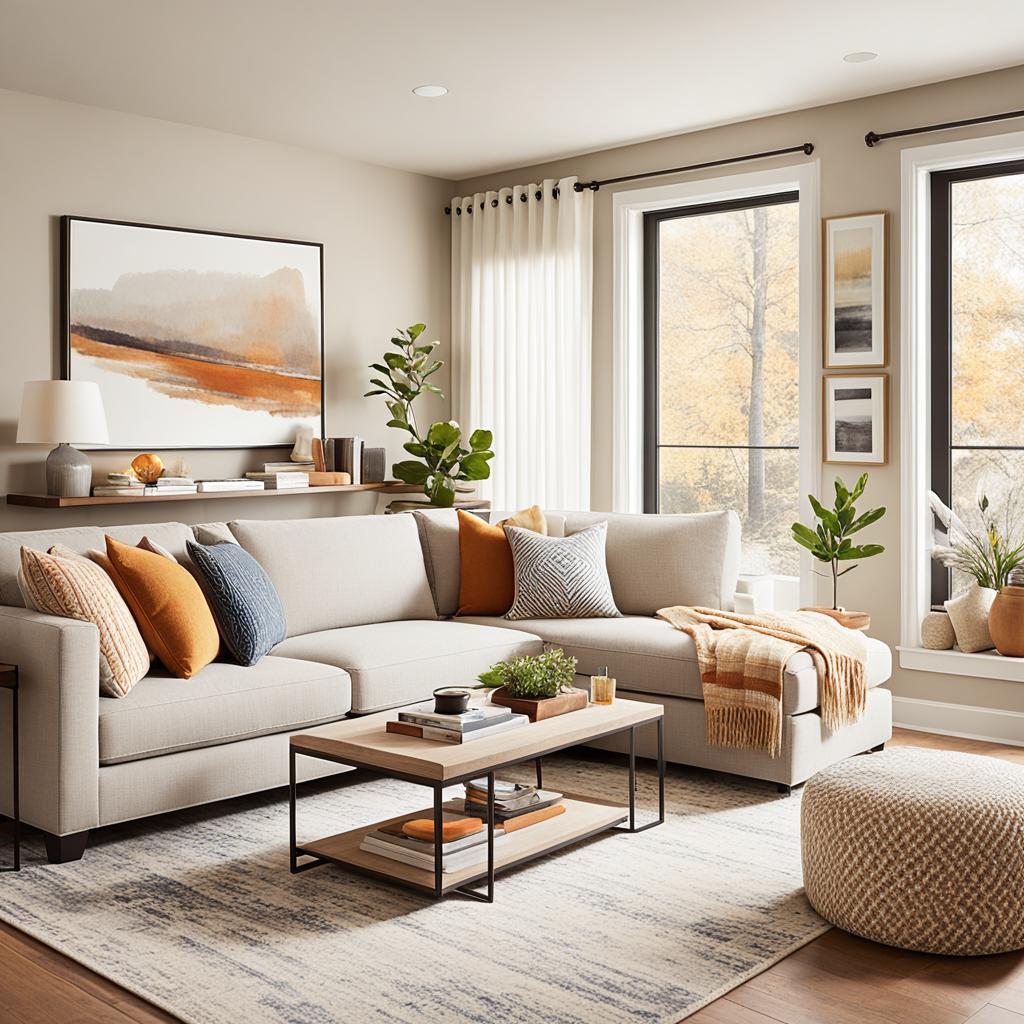The main living area may not be large, but there are many ways to create an inviting small living room that feels like home while maximizing storage and placement of favorite items. Small living spaces are cozy, affordable, and adorable, but designing them to make them just right requires careful consideration of every decision, from furniture to color choices, through the lens of small-space living.
A well-designed small apartment living room can transform a little nook into a thoughtful gathering space for the whole household. Fortunately, the power of the internet provides plenty of decor ideas and layouts that can serve as the perfect solution for compact living room and tiny living room situations.
Key Takeaways
- Small living spaces can be transformed into cozy, functional, and inviting areas through careful design choices.
- Maximizing storage and making the most of limited square footage are key considerations for small space design.
- Leveraging the power of the internet provides access to a wealth of small living room ideas and inspiration for compact living room solutions.
- A well-designed small apartment living room can create a thoughtful and welcoming gathering space for the whole household.
- Embracing the unique challenges of tiny living room design can result in a charming and functional living area.
Color and Visual Tricks for Small Living Rooms
When designing a small living room, the strategic use of color and visual tricks can create the illusion of a more spacious and inviting atmosphere. By employing light colors and leveraging the reflective power of mirrors, you can enhance the perceived size of your compact living space.
Use Light Colors to Create an Illusion of Space
Painting the walls, trim, and ceiling in a consistent palette of light colors can make a small room feel more spacious and open. Lighter shades, such as soft whites, blues, or greens, create an illusion of space and openness, in contrast to darker, heavier colors that can make a room feel closed in. This color trick for small rooms helps visually expand the space, making it appear more inviting and airy.
Utilize Mirrors to Reflect Light and Expand the Room Visually
Strategically placing mirrors in a small living room can make the space feel larger by reflecting light and creating the illusion of depth. Positioning mirrors across from windows or other light sources allows the light to bounce around the room, making it appear brighter and more open. Mirrors also create the visual effect of expanding the room, making it seem bigger than its actual size. This visual trick for small living rooms is an effective way to enhance the perceived spaciousness of the space.
Furniture Selection for Compact Living Areas
When furnishing a small living room, it’s important to choose pieces that serve multiple functions to maximize the limited space. Furniture with built-in storage, such as ottomans or coffee tables with hidden compartments, allows you to tuck away items and reduce clutter. Borrow from minimalist design by selecting multi-purpose furniture for small spaces that offer several uses in one, freeing up additional floor space and minimizing the visual footprint.
Opt for Multifunctional and Space-Saving Furniture
In a small living room furniture setting, selecting pieces with a clean, streamlined aesthetic can create a sense of openness and make the space feel less cramped. Furniture with a lightweight, leggy appearance visually opens up the room by allowing more of the floor to be seen, which gives the impression of a larger, more expansive area. Avoiding bulky, heavy furniture and instead opting for compact living room furniture with sleek, streamlined designs helps maximize the perceived spaciousness of the room.
Choose Sleek and Leggy Pieces to Enhance Openness
By incorporating small living room furniture that is multifunctional and space-saving, you can create a living area that feels uncluttered and visually expansive, despite the limited square footage. Prioritizing lightweight, leggy pieces with a minimalist aesthetic can go a long way in enhancing the sense of openness and making the most of your compact living room furniture.

living room ideas for small spaces
When space is limited, a sofa with built-in storage can be a game-changer for a small living room. Storage sofas discreetly offer extra space for items, whether in modular formats or hidden compartments within the furniture itself. These innovative solutions cater to the growing demand for stylish yet functional furniture in compact living environments, allowing homeowners to maximize every square inch of their small space living room furniture.
Consider Storage Sofas for Hidden Storage
Storage sofas discreetly offer extra space for items, whether in modular formats or hidden compartments within the furniture itself. These multifunctional sofas cater to the growing demand for stylish yet functional furniture in compact living environments, allowing homeowners to maximize every square inch.
Opt for Straight-Back Sofas and Tapered Legs
Choosing the right sofa design can make a big difference in a small living room. Sofas with a straight back, rather than curved or oversized designs, allow the furniture to sit flush against the wall, making the most of the available space. Additionally, sofas with tapered legs, rather than wide frames, create the illusion of more open space by elevating the furniture slightly and reducing the visual bulk.
Layout and Organization Strategies
When arranging furniture in a small living room, maintaining symmetry and balance can create a sense of order and make the space feel more open. Positioning furniture, such as a sofa and chairs, in a symmetrical layout around a focal point, like a fireplace or feature wall, can visually expand the room and provide a calming, cohesive look. This strategic arrangement helps define distinct zones within the limited square footage.
Maintain Symmetry and Balance in Furniture Arrangement
In a small living room, area rugs can be used to delineate different functional zones, such as a conversation area and a TV-watching spot. Placing a large rug that anchors the main seating area can make the space feel more intentional and defined, rather than just a single, cluttered room. The rug helps establish boundaries and visual interest without the need for physical dividers, creating a sense of order and flow in the compact space.
Utilize Area Rugs to Define Different Zones
| Furniture Arrangement Strategies | Benefits |
|---|---|
| Symmetrical layout around a focal point | Visually expands the room and creates a calming, cohesive look |
| Placement of area rugs to define zones | Establishes boundaries and visual interest without physical dividers |

Maximizing Vertical Space and Storage
To make the most of limited square footage in a small living room, it’s important to take advantage of vertical space. Incorporating floating shelves and wall-mounted storage units allows you to utilize the walls for displaying decor, books, and other items without taking up valuable floor space. These space-saving solutions help keep the room feeling open and uncluttered while providing necessary storage.
Wall-mounted furniture, like slender shelving or modular storage cabinets, can maximize the vertical real estate in a compact living room. Wall-mounted furniture for compact spaces frees up floor space, creating an airy, unencumbered feel. Strategically placed vertical storage ideas help organize and display items without consuming precious square footage.
By harnessing the underutilized vertical areas, homeowners can transform a small living room into a functional and visually appealing space. Storage solutions for small living rooms that utilize the walls and ceilings offer a practical and stylish way to maximize the limited footprint.
Lighting Techniques for Enhancing Perceived Space
Proper lighting is crucial for making a small living room feel more spacious. Allowing natural light to flood the room can create an airy, open atmosphere. Using curtains or blinds that can be adjusted to let in as much sunlight as possible can help expand the perceived size of the space. Strategically positioning furniture and decor to not block windows is also important for maximizing natural illumination.
Use Curtains or Blinds to Allow Natural Light
Harnessing the power of natural light is one of the most effective ways to make a small living room feel more expansive. By using curtains or blinds that can be easily adjusted, you can control the amount of sunlight that enters the space. When open, these window treatments allow the room to be filled with natural illumination, creating an illusion of a larger, brighter environment. Strategically positioning furniture and decor to avoid blocking windows is also key to maximizing natural light and enhancing the perceived size of the room.
Install Sconces or Wall-Mounted Lights
In addition to natural light, incorporating strategic artificial lighting can enhance the feeling of openness in a small living room. Wall-mounted sconces or other wall-mounted light fixtures free up floor space compared to table lamps or floor lamps. These space-saving lighting solutions provide illumination without taking up valuable real estate, creating a cleaner, more streamlined look that contributes to the illusion of a larger room. By utilizing these alternative lighting options, you can effectively expand the perceived size of your small living space.

